More Than 140 Million Acres in Federal Farm Conservation Programs
TOPICS
Wildlife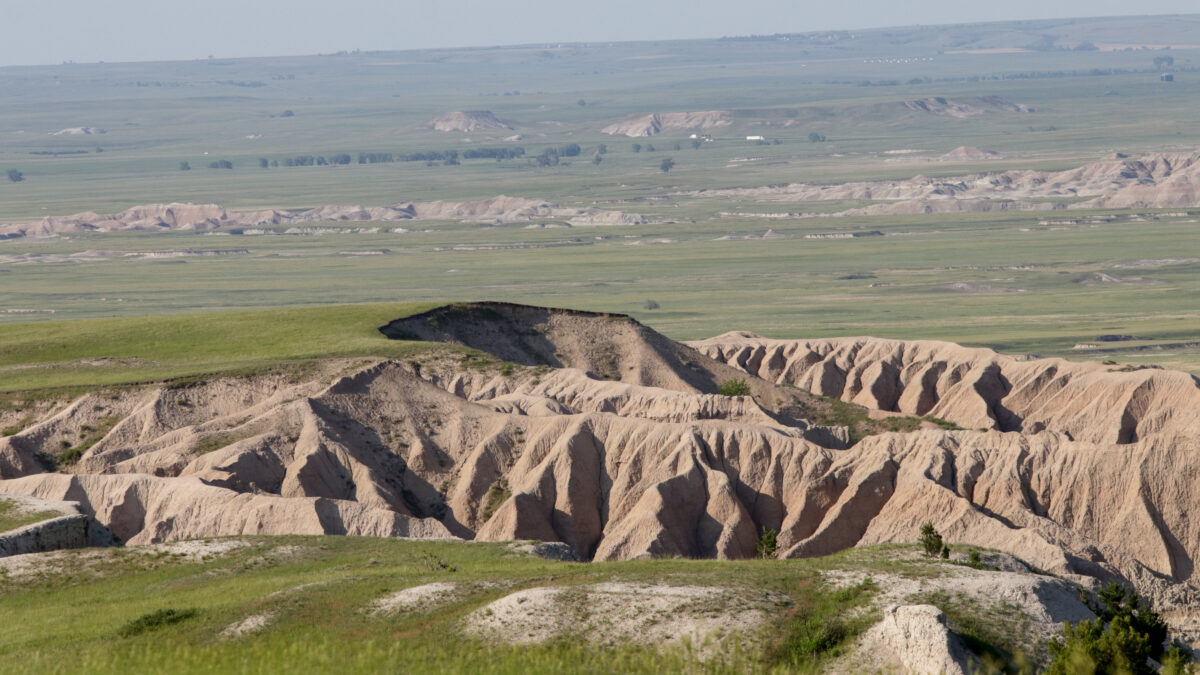
photo credit: Alabama Farmers Federation, Used with Permission
John Newton, Ph.D.
Vice President of Public Policy and Economic Analysis
The 2017 Census of Agriculture revealed total farm acres in the U.S., including pasture, cropland and woodlands, at 900.2 million acres, approximately 40% of the country’s entire land area (The 2017 Census of Agriculture, Our First Take). On these 900 million acres farmers use a variety of resource-conserving and wildlife habitat-preservation practices to protect and enhance natural resources and wildlife, as well as protect the environment.
Farmers perform these conservation, resource-saving and wildlife-based practices through a variety of federal and taxpayer-assisted conservation programs including but not limited to the Conservation Reserve Program, Conservation Stewardship Program, Environmental Quality Incentives Program, Agricultural Conservation Easement Program and Voluntary Public Access and Habitat Incentive Program. When including acreage under contract in these additional conservation programs, more than 140 million acres of farmland in the U.S. are currently receiving conservation-related financial and technical assistance from the federal government to install resource and wildlife preservation practices.
Importantly, these federal conservation efforts are equivalent to more than 15% of all U.S. farm acres and cover an area larger than California and New York combined. Moreover, this total does not include all farmer conservation efforts through state-initiated and private conservation programs.
Two recent Market Intel articles highlighted these federal conservation programs and the changes made to these programs in the 2018 farm bill: EQIP and CSP Conservation Programs in the 2018 Farm Bill and Conservation Reserve Program in the 2018 Farm Bill. Today’s article reviews enrollment in EQIP, CSP and CRP as a percentage of total agricultural land area.
Land in the Conservation Reserve Program
CRP is a voluntary land retirement program that provides financial compensation to landowners to remove highly erodible and environmentally sensitive land from agricultural production and install resource-conserving practices or preserve wildlife habitat. The compensation paid to farmers under CRP includes rental payments and, at times, cost-sharing in addition to the rental payments to implement additional conservation practices on CRP ground.
CRP is the largest federally administered private-land retirement program, with annual outlays approaching $2 billion per fiscal year. CRP enrollment is capped each year, and under the 2014 farm bill, enrollment was limited to no more than 24 million acres during fiscal years 2017 and 2018. The 2018 farm bill expands CRP acreage to a maximum of 27 million acres by 2023.
For fiscal year 2017, which coincides with the Census of Agriculture, Farm Service Agency data revealed 23.4 million acres were enrolled in CRP. Enrollment was the highest in Texas, at 2.9 million acres, followed by Kansas, at 2.1 million acres.
While CRP enrollment was the highest in the Southwest, Midwest and Upper Midwest, as a percentage of farm acres, CRP enrollment was the highest in Washington at 8% and Mississippi at 7%. In six states (Kansas, Idaho, Colorado, Iowa, Mississippi and Washington), the percentage of farmland enrolled in CRP was greater than or equal to 5%. Fourteen states had CRP enrollment as a percentage of total farm acres greater than the national average of 2.6%. Figure 1 shows CRP acres as a percentage of a state’s total farm acres.
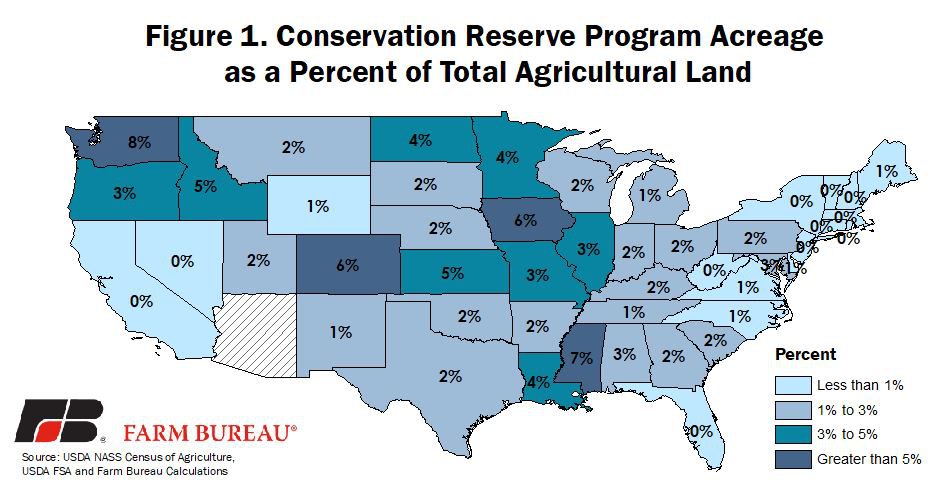
Land in the Conservation Stewardship Program
CSP is a working lands program that provides financial and technical assistance to farmers for maintaining and improving existing conservation systems as well as adopting additional conservation activities. CSP includes a variety of resource and wildlife restoration activities including but not limited to the planting of cover crops, the development of wildlife habitat, the reduction of soil erosion and the improvement of grazing conditions. CSP contracts are typically five years in length.
CSP enrollment data indicates that since 2014 nearly 77 million acres of agricultural land have been enrolled in active and completed contracts. Enrollment was the highest in South Dakota, Nebraska and New Mexico at nearly 20 million acres combined. As a percentage of agricultural land in CSP, enrollment was the highest in Alaska at 44%, New Hampshire at 23% and over 20% in both Arkansas and Louisiana. Eighteen states have more than 10% of their agricultural land area enrolled in active or completed CSP contracts, Figure 2.
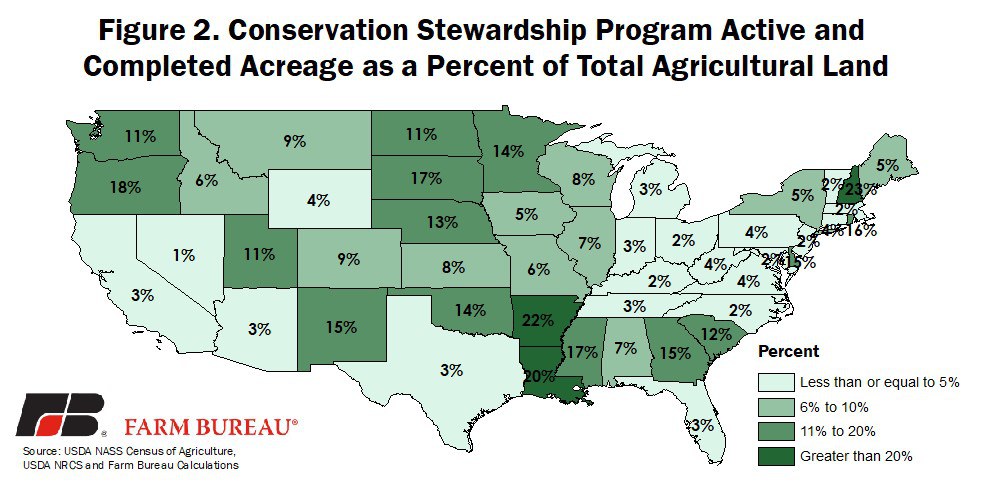
Land in the Environmental Quality Incentives Program
Like CSP, EQIP is a working lands conservation program that addresses priority resource concerns on farmland that is actively in production. Through EQIP, USDA provides financial and technical assistance to producers and landowners for planning and installing structural, vegetative and land management practices on eligible working lands to conserve natural resources.
There are hundreds of approved EQIP practices, with the most widely used EQIP practices being cover cropping, nutrient management, irrigation water management, prescribed grazing, fencing and forest stand improvements. EQIP contracts are generally three years in length.
Data from USDA’s Natural Resources Conservation Service indicates that from fiscal years 2015 to 2017 there were 32 million acres in the U.S. covered under active and completed EQIP contracts. EQIP acreage over the past three fiscal years represented approximately 4% of all U.S. farmland. EQIP active and completed acres were the highest in Texas at 6.5 million acres, followed by New Mexico at 4.2 million acres.
While EQIP enrollment was the highest in the Southwest, as a percentage of farm acres, EQIP enrollment was the highest in Rhode Island at 27%, New Hampshire at 19% and Delaware at 17%. Twenty-two states had EQIP enrollment as a percentage of total farm acres greater than the national average of 3.6%. Figure 3 shows EQIP acres as a percentage of a state’s total farm acres.
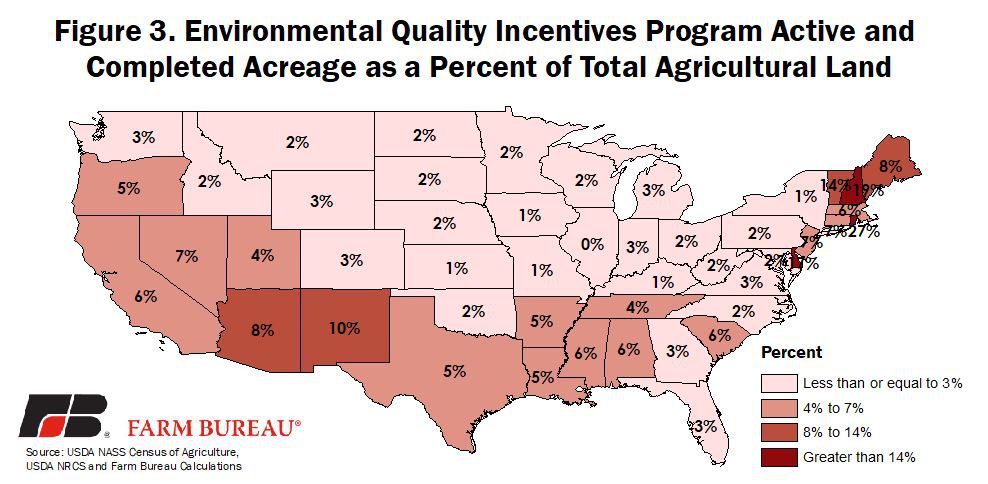
Total Land in Conservation
Across all three primary federal conservation programs, CRP, CSP and EQIP, more than 132 million acres have been enrolled in working lands and land retirement conservation programs, representing 15% of agricultural land in the U.S. ACEP and VPA-HIP contribute an additional 12 million acres in conservation and wildlife initiatives – however state-level data in these programs was unavailable.
Participation in the CRP, CSP and EQIP programs was the highest in Texas at 13.8 million acres, followed by 10.5 million acres in New Mexico and 9.4 million acres in South Dakota. Figure 4 highlights total acreage enrolled in CRP and active and completed contracts in EQIP and CSP through fiscal year 2017 and based on the average three-to-five-year contract length.

As a percent of the total agricultural land area, land in conservation programs among the lower 48 states was the highest in Rhode Island at 44%, followed by New Hampshire at 42%. In 20 states land enrolled in federal conservation programs represented more than 20% of their agricultural land area, Figure 5.
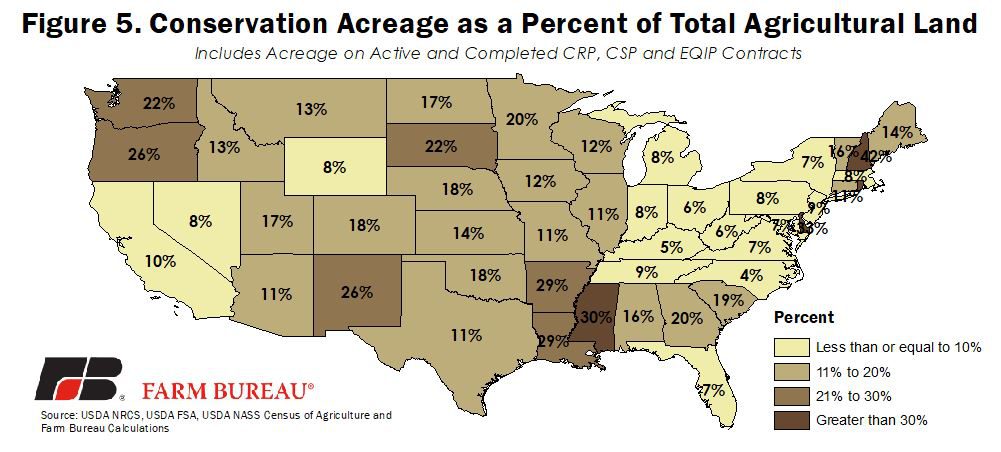
Summary
As evidenced in the participation across the various federal conservation and wildlife preservation programs, farmers have long contributed to preserving and saving natural resources, including water and soil, while also capturing carbon in the soil through the use of cover crops and no-till soil practices. When including farmers’ efforts to produce more clean and renewable energy sources, the conservation and clean-energy efforts of farmers and ranchers set a strong example for governments around the world of how farmers can help provide a sustainable future.
